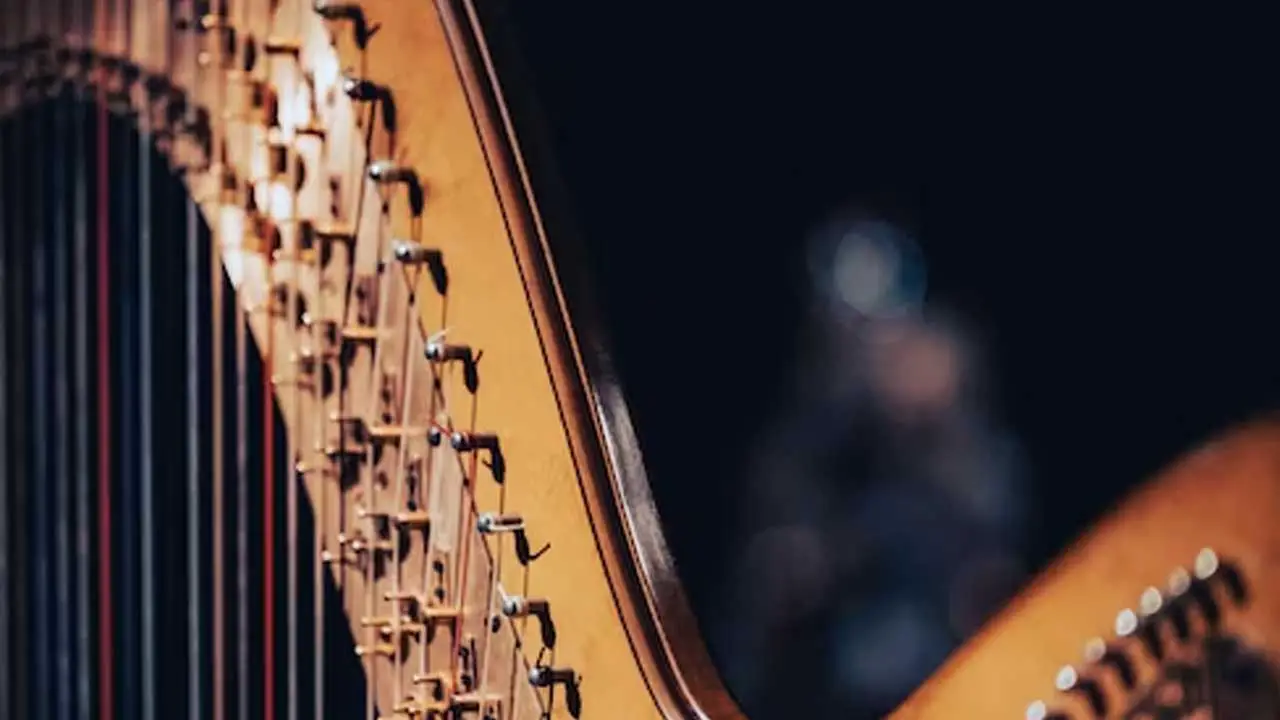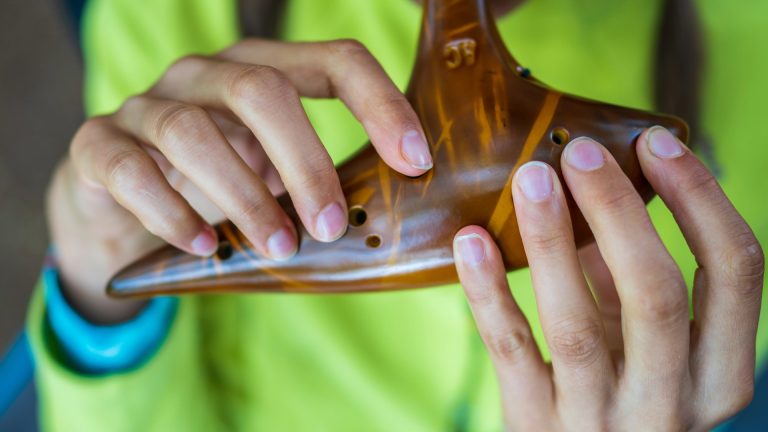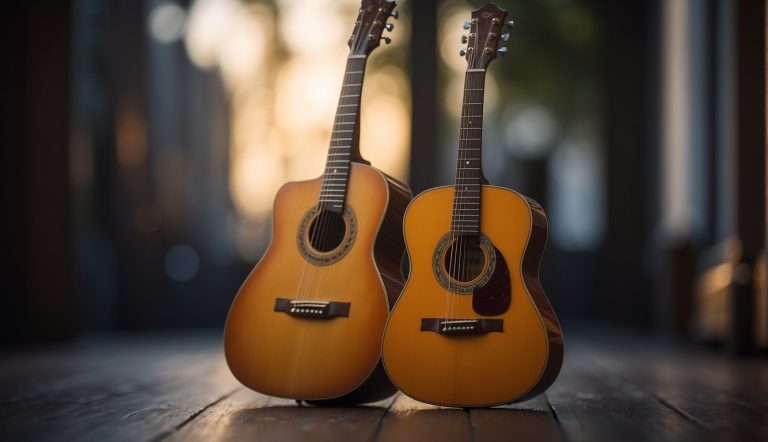How to Store a Harp: Expert Tips for Safekeeping and Longevity
Folkstrings.com is reader-supported. When you buy through links on our site, we may earn a small commission.
As a harp owner, proper storage is essential for maintaining the longevity and sound quality of your beloved instrument. Harps are delicate and sensitive to environmental factors such as temperature, humidity, and light exposure. Understanding how to store your harp correctly can save you from costly repairs and ensure that your instrument remains in optimal condition for years to come.
Some key factors to keep in mind while storing your harp include protection from dust, sunlight, moisture, and extreme temperatures. A drape cloth or dust cover if you can get one is highly recommended for frequent players, as it prevents dust accumulation and is easy to put on and take off. Be mindful of the location where you store your harp, avoiding direct sunlight, moisture sources, and extreme temperatures.
Additionally, maintaining a consistent temperature and humidity in the room where your harp is stored is crucial for preserving its structural integrity and sound quality.
Table of Contents

Selecting The Right Location
Finding the right spot to store your harp is essential for maintaining its longevity and sound quality. In this section, we’ll discuss the factors to consider when selecting a location for your harp.
The Right Temperature and Humidity are Very Important
Temperature and humidity are crucial factors when it comes to harp storage. Your harp will perform best and last longer in a consistent environment. Avoid exposing your harp to sudden changes in temperature or humidity.
Keep your harp well away from air vents, heaters, or AC units, as these can cause fluctuations in temperature and humidity. Ideal conditions for harp storage are around 70°F (21°C) and a humidity level of 40-50%.
We recommend investing in a hygrometer to monitor the humidity level in your harp’s storage area especially if you live in a region with varying conditions.
Avoid Direct Sunlight
Direct sunlight can cause the wood of your harp to dry out, warp, or fade. While some exposure to natural light is acceptable, it’s best to avoid placing your harp near windows where it will receive direct sunlight for extended periods. Using window shades, blinds, or a drape cloth can help protect your harp from harmful UV rays.
Safe and Stable Surfaces
A stable and level surface is essential for storing a harp safely. Depending on the size of your harp, you may need to adjust the sitting height or use a box to achieve a comfortable playing position. Avoid worrying about the exact height of your harp or chair, as simple adjustments can make playing comfortable.
Ensure that the area where your harp is placed is free from hazards like tripping or falling objects. Keeping your harp in a dedicated area away from high traffic or cluttered spaces will minimize the risk of accidents.
Protecting the Harp
Proper storage of your harp is essential for protecting it from damage and ensuring it has a long life. In this section, we’ll discuss a few important steps you can take to protect your harp, including using a harp cover, storing your harp on its back, and removing string tension.
Using a Harp Cover
A harp cover or drape cloth is a great way to protect your harp from dust, direct sunlight, and other environmental factors. A drape cloth is ideal for those who play frequently since it’s easy to put on and take off. This can also help prevent potential damage caused by pets, children, or roommates.
You Can Store The Harp on Its Back
Many people don’t do this due to a lack of space, but storing your harp on its back is another effective way to protect it from potential damage.
This position helps distribute the weight more evenly and prevents the harp from falling over if accidentally bumped or if it experiences a shift in weight distribution over time.
Removing String Tension
For extended periods of non-use, it’s a good idea to reduce tension on the strings by slightly detuning the harp. This can help prevent stress on the soundboard, column, and other structural components of the harp. Remember to get your harp professionally tuned and inspected once you plan on playing it again.
By following these tips and keeping your harp in a safe environment, you can ensure it stays in the best condition possible.
Transportation and Travel Tips
Dismantling the Harp
Before transporting your harp, it’s crucial to prepare it for the journey. Begin by loosening the strings slightly, which will relieve tension and protect your harp from any unexpected bumps during transportation. Remember to handle your harp carefully to avoid any damage.
Using a Protective Case
Investing in a high-quality protective case is essential when you’re transporting your harp. A proper case will shield your harp from environmental factors, and any accidental impacts, keeping it safe throughout the journey. When placing your harp inside the case, ensure that all levers are down.(source) Strap it securely using the shoulder straps and hand loop, bearing in mind that shoulder clips can sometimes snap.
Professional Shipping Options for Harps
If you need to ship your harp over a long distance, it’s best to opt for a professional shipping service. Experts, such as Fine Art Shippers, offer specialized packing materials and techniques to ensure that your harp is well-protected during transportation.
When flying with your harp, check with the special cargo group of your chosen airline to determine their specific guidelines for transporting your instrument. Some airlines, like Delta, require you to purchase a second ticket for your harp, allowing it to travel in the cargo hold.
Lastly, always remember to handle your harp with care and inform those around you that it’s a delicate instrument. Following these precautions will help ensure that your harp arrives at its destination in the best possible condition.
Long-Term Storage Solutions
Finding the right long-term storage solution for your harp is essential to maintaining its quality and longevity. In this section, we will cover climate-controlled facilities, keeping the harp accessible, and conducting regular maintenance checks.
Climate-Controlled Facilities
When storing your harp for an extended period, it is crucial to choose a location with consistent temperature and humidity levels. Climate-controlled facilities are ideal since they offer that stable environment your harp needs. Changes in temperature and humidity can cause wood to expand or contract, potentially affecting the instrument’s structural integrity.
Keep the Harp Accessible
Accessibility is critical when storing a harp for long periods. It would help if you had access to the harp to perform regular maintenance checks and make any necessary adjustments. A convenient storage location will also ensure you can easily use a drape cloth or dust cover to protect your harp from dust and potential damage.
Regular Maintenance Checks
Performing routine maintenance checks on your stored harp is essential. This ensures that the instrument remains in good condition and helps identify any potential issues that may arise. During these maintenance checks, examine the strings and their tension, as well as the overall structure and cleanliness of the harp. Keep in mind that the need to loosen the strings can depend on the storage duration and the string type.
In summary, adequate long-term storage of your harp involves a climate-controlled environment, easy access, and regular maintenance checks to ensure your instrument remains in excellent condition.

How to Store Harp Strings
Proper storage of your harp strings is essential to prolong their lifespan and maintain optimal sound quality. In this section, you’ll learn the best practices for storing harp strings.
Firstly, organize your spare strings into octave-packets. Each packet should contain strings from string E down to F within the octave range, held together with a rubber band or a zip-locked bag.
Labelling each packet with the corresponding octave will help you quickly identify the strings you need when it’s time to replace them.
Consider storing these octave-packets in a dedicated container like a briefcase or a plastic storage box to protect them from dust, moisture, and damage.
Place the organized strings in order, from the first octave to the bass wires, making it easier to locate the right string when needed.
When choosing a storage location, opt for a cool, dry place away from direct sunlight or heat sources. Sudden changes in temperature and humidity can negatively affect the strings’ tension and longevity. Additionally, keep your harp strings away from sharp objects or chemicals that may damage the strings’ material.
To summarize, storing your harp strings in a well-organized and safe manner ensures that you’re always prepared for string replacements, and subsequently helps maintain the quality of your harp’s sound.
Author Profile
-
Daniel Johnstone is an English writer with a love for stringed instruments from around the world.
He shares his love for these instruments through his writing for folkstrings.com, a website dedicated to all things related to folk string music.
Daniel's passion for music started at a young age, and he has since become an accomplished musician, playing guitar, cavaco, and recently, the harp.
His dedication to learning and sharing his knowledge of stringed instruments is evident in his insightful and engaging blog posts. Whether you're a seasoned musician or a beginner, Daniel's writing is sure to inspire and entertain you.
When he's not playing music or writing, you can find Daniel exploring new instruments and seeking out new sounds to share with his readers.
Latest entries
 AutoharpApril 4, 2024What Is the Autoharp Made Of: Exploring Its Materials and Craftsmanship
AutoharpApril 4, 2024What Is the Autoharp Made Of: Exploring Its Materials and Craftsmanship AutoharpApril 4, 2024Is Autoharp Easy to Play? Unveiling the Truth for Beginners
AutoharpApril 4, 2024Is Autoharp Easy to Play? Unveiling the Truth for Beginners AutoharpApril 4, 2024What Is an Autoharp Worth? Your Guide to Pricing and Value
AutoharpApril 4, 2024What Is an Autoharp Worth? Your Guide to Pricing and Value AutoharpApril 4, 2024Are Autoharp and Zither the Same Thing? Unraveling String Instrument Myths
AutoharpApril 4, 2024Are Autoharp and Zither the Same Thing? Unraveling String Instrument Myths
Affiliates:
This post may contain affiliate links that at no additional cost to you, the site may earn a small commission. We only recommend products we would use ourselves and all opinions expressed on this site are our own.
Accuracy Advice:
While we strive to provide up-to-date and accurate information, the content in this article may not reflect the most current research or medical guidelines. We encourage readers to do further research and consult with professionals for more personalized advice.
Our Recommendations:
The products and services mentioned in any of our articles are recommended based on our independent research and personal experience. We are not sponsored by any company. We aim to suggest products and services we believe are of high quality and could be beneficial to our readers.





